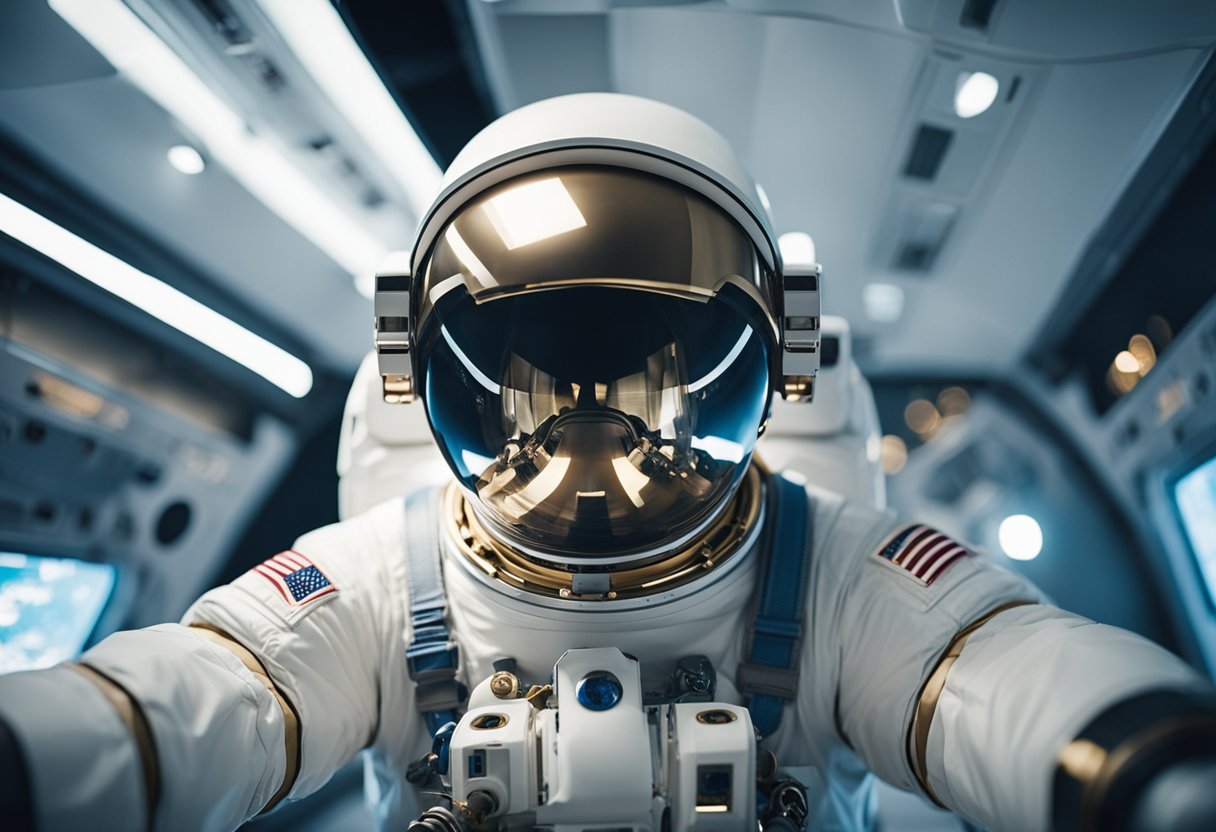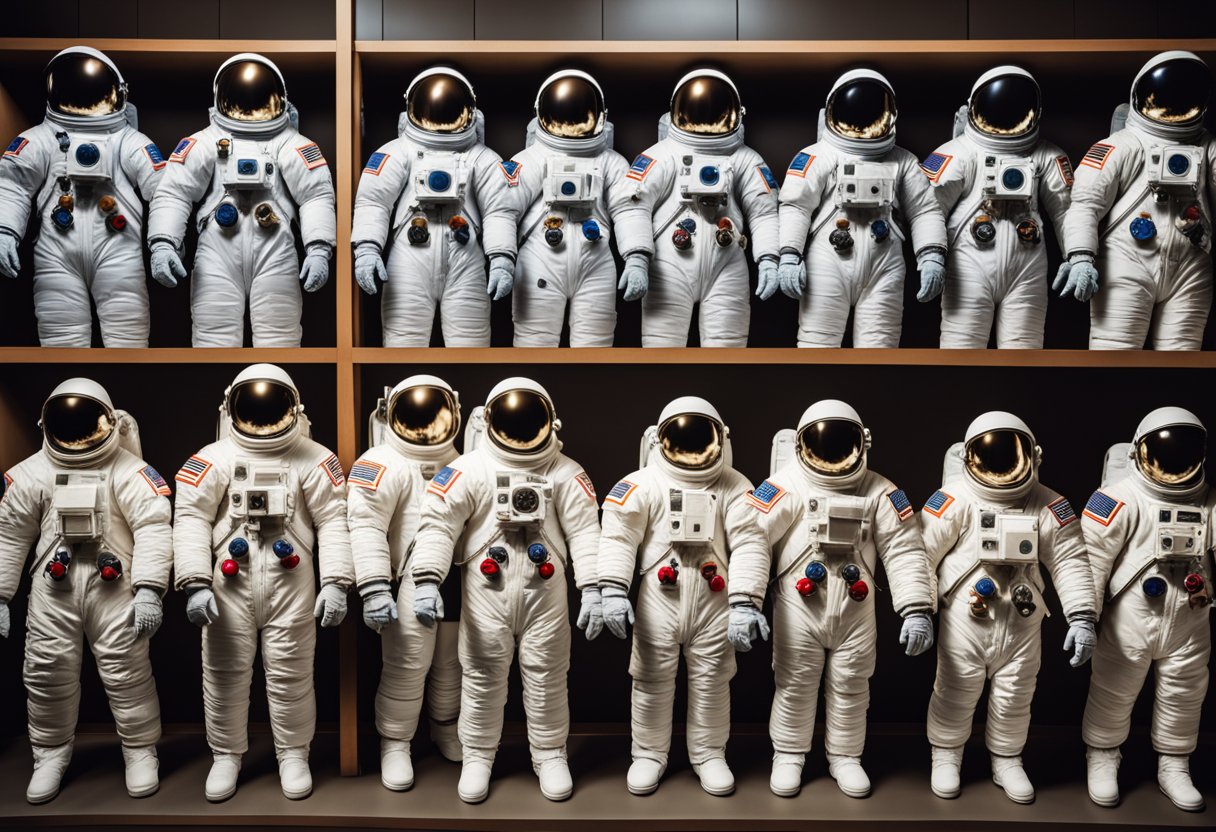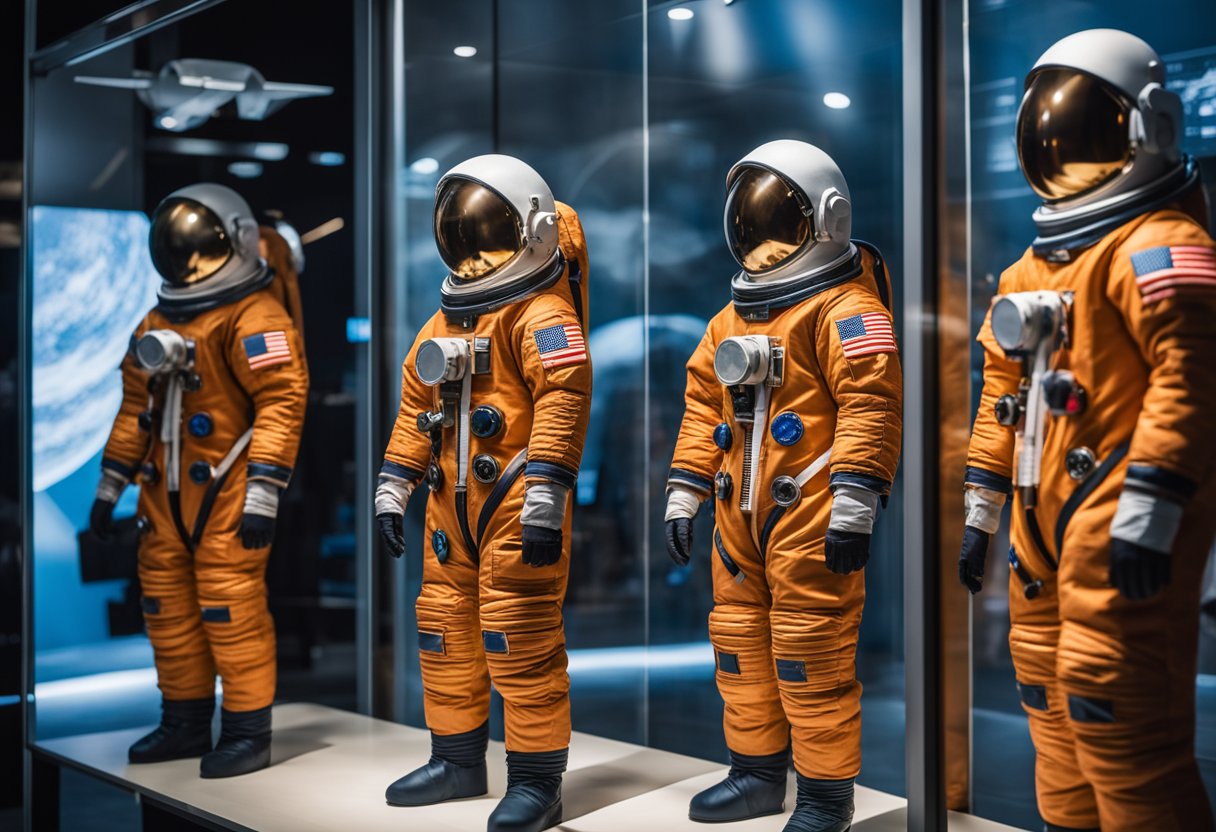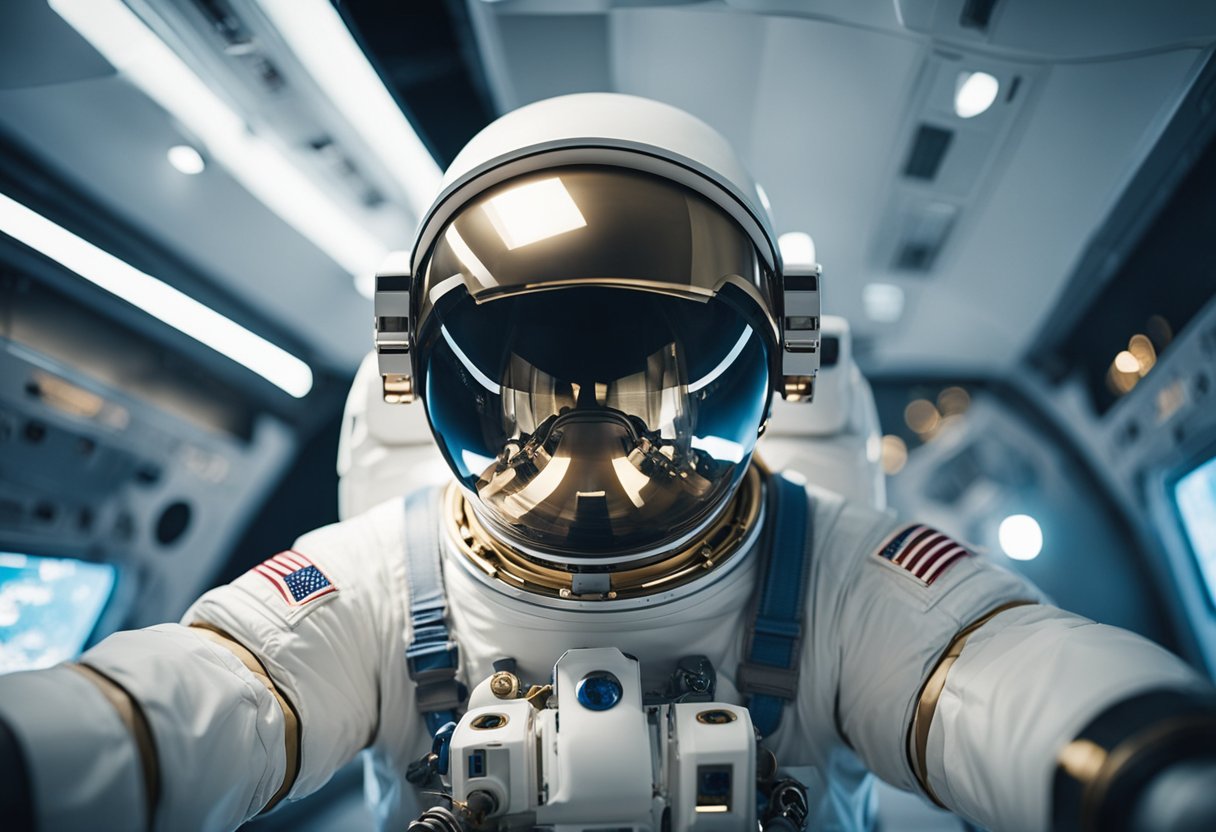
Astronaut suits, or space suits, have undergone significant transformations since their inception. The journey of space suit evolution is closely tied to the milestones in space exploration history, each design reflecting the era’s technological capabilities and mission requirements. From the early pressure suits of Project Mercury designed simply to protect the astronaut in the event of cabin depressurization, to the more advanced suits that supported moon landings during the Apollo program, the underlying goal has always been the same: to keep astronauts alive and functional in the harsh environment of space.

As space missions evolved, so did the need for improved mobility and life support systems within the suits. The space shuttle and International Space Station (ISS) programs introduced space suits that enable astronauts to perform extravehicular activities (EVAs), demonstrating enhanced suit functionality and mobility. The development of these suits incorporated advanced materials and technologies, to not only withstand the vacuum of space but also to allow for movements as natural as possible given the conditions outside a spacecraft.

In this critical juncture of human achievement, we witnessed the first humans traverse the cosmos, encapsulated in pioneering space suits that laid the groundwork for all subsequent extravehicular endeavours.
Project Mercury marked the United States’ introduction into manned spaceflight, a noteworthy period where astronauts such as Alan Shepard and John Glenn donned the Mercury suit, a garment tailored for intra-vehicular activity. Shepard, the first American in space, was encapsulated in this suit during the Freedom 7 mission, a pivotal moment for our spacefaring ambitions. Similarly, Glenn’s historic orbital flight in Friendship 7 made use of the Mercury suit, proving its integrity in sustaining human life amidst the unforgiving vacuum of space.
On the other side of the space race, the Soviet Union celebrated their own monumental accomplishment with Yuri Gagarin, the first man to orbit Earth, wearing the SK-1 pressure suit. His Vostok 1 mission not only ushered in the era of manned space travel but also highlighted the importance of suit design for the survival and mobility of cosmonauts in space. These strides in spacesuit technology were not merely for survival but symbolized the quintessential spirit of human exploration and the intrinsic desire to expand our frontiers.
The trajectory of spacesuit design has seen a compelling escalation of technological sophistication. These enhancements have answered the rigorous demands of survival and functionality in the void of space.
With the advent of the Gemini missions, we witnessed substantial strides in suit flexibility and mobility. The Gemini G-2C training suit exemplified a shift towards a more versatile and comfortable ensemble for astronauts. It incorporated improvements such as easier ingress and egress, which significantly enhanced the astronauts’ ability to manoeuvre during training.
When the Apollo missions sought to achieve the monumental task of landing a man on the Moon, the Apollo spacesuit was born out of necessity. These suits had to support life and enable movement in the harsh lunar environment. Neil Armstrong and Buzz Aldrin, wearing these pioneering suits, created history with Apollo 11. Notable advancements included micrometeoroid protection and thermal insulation, vital for the Moon’s extreme conditions. The suits served as self-contained life-support systems and were the astronauts’ primary safeguard against the vacuum of space.
In exploring the advances of spacesuit technology, we consider the critical facets of pressure suits and temperature management that ensure astronaut safety in extreme environments. Our focus on material science and engineering innovation underpins the sophisticated systems in use today.
Pressure suits are essential for maintaining a life-supporting environment around the astronaut’s body. They counteract the vacuum of space by providing stable internal pressure, which is vital for bodily functions. Initially, pressure suits were rigid due to the materials used, but advancements have led to more flexible designs that afford astronauts better mobility. For instance, the incorporation of materials like Teflon and Kevlar has greatly enhanced the durability and flexibility of these suits, ensuring protection against radiation and micrometeorites while allowing for more natural movement.
The complexity of temperature management systems in a space suit reflects the challenge of extreme fluctuations in space. Cooling and heating elements are woven into the suit’s layers to protect against the stark contrast between the intense heat of direct sunlight and the deep cold of shadowed space, which can range from 120°C to -160°C. An active liquid cooling and ventilation garment is typically worn underneath the pressurised suit, circulating cool water around the body to remove excess heat. The outer layers of the suit are integrated with reflective materials to deflect solar radiation, thereby stabilising the internal environment.
By interweaving cutting-edge tech with robust materials, contemporary space suits have evolved into highly sophisticated garments, integral to the safety and efficiency of space exploration. The strides we’ve made are paving the way for future innovations, not only for professional astronauts but also for the nascent industry of space tourism as seen on platforms like SpaceVoyageVentures.com.
In our pursuit of the cosmos, we’ve continually enhanced spacesuit design to improve mobility and functionality. Each iteration brings us closer to movement akin to that on Earth, whilst maintaining life-support and protection for astronauts.
Gloves in spacesuits have seen substantial development to improve dexterity. Utilising ball bearings in the joints, we’ve increased flexibility, allowing astronauts to grasp and manipulate tools with greater precision. Similarly, boots are designed for both protection and mobility. With attention to the soles, we aim to mimic the natural gait of walking on the lunar or Martian surface, with adjustments in tread and flexibility based on the extravehicular activity (EVA) requirements.
The helmet and visor are key to astronaut safety and vision. We’ve engineered helmets with advanced materials that are resistant to impacts and provide a clear field of view. The visor development includes enhanced polarisation to protect against the intense glare of unfiltered sunlight in space, and it is meticulously constructed to reduce fogging and increase visibility, vital for the intricate work required during EVA.

In the vast vacuum of space, the life support systems in an astronaut’s suit are critical for survival. They are designed to provide a stable supply of oxygen and regulate the buildup of carbon dioxide during extravehicular activity.
Our spacesuits are equipped with a primary life support system (PLSS) which supplies oxygen from high-pressure tanks. This oxygen is vital for both breathing and pressurising the suit. In a typical setup, the suit maintains an oxygen concentration similar to Earth’s atmosphere, allowing astronauts to breathe normally while out on a spacewalk. It’s a sophisticated balance: too much oxygen and the risk of a fire in the pure oxygen environment increases; too little, and the astronaut could suffer from hypoxia.
As we exhale, carbon dioxide must be scrubbed from the air within the suit to prevent a dangerous buildup. This is usually accomplished using lithium hydroxide canisters which absorb the carbon dioxide from the exhaled air. It’s critical for the absorption material to be efficient, especially during prolonged periods of extravehicular activity, to ensure the air remains breathable.
Our advancements in life support technologies are not only sustaining astronauts but also paving the way for the future of space exploration. For example, as detailed by SpaceVoyageVentures.com, these technologies will be integral for early adopters of space tourism, offering them the same protection as professional astronauts.
EVA suits are engineered to provide life support and protection for astronauts during operations outside a spacecraft. They have evolved to enhance mobility and safety, vital for missions such as those conducted during the Apollo era, to facilitate spacewalks and Moon exploration.
The inception of EVA suits began with the need to perform tasks outside the confines of a spacecraft. These early suits were rigid and cumbersome, offering basic life support but limited mobility. Continuous advancements in materials and design led to the creation of more flexible and robust suits, allowing astronauts to move with greater ease in the harsh environment of space.
During the Gemini missions, EVA capabilities were tested rigorously, setting the stage for more ambitious extravehicular activities during the Apollo program. Suits were enhanced to manage the thermal extremes and micrometeoroid threats encountered in space. With each mission, we’ve seen the suits adapt, incorporating feedback from astronauts to refine the pressure garments, life support systems, and suit materials.
When our focus shifted to the Moon during the Apollo era, EVA suits had to undergo significant modifications to accommodate the lunar surface’s unique challenges. The Apollo space suit, known as the A7L, embodied these changes. It was designed with layers of material to guard against lunar dust and equipped with a life support backpack that sustained the Apollo astronauts for up to eight hours.
The development of the lunar overshoes was crucial for the insulation and protection of astronauts’ boots, while the inclusion of a visor shielded their eyes from the Sun’s glare. With each space walk on the Moon, suits were refined to boost thermal regulation, mobility, and reliability. This culminated in the A7LB for the Apollo 15-17 missions, which allowed more freedom of movement and longer EVA durations.
Our understanding of EVA suit requirements has enabled us to make significant strides, but the pursuit of improvement continues, as we ready ourselves for future missions to the Moon and beyond. As we do so, our collective efforts also feed into the shared human dream of space travel, documented on platforms like SpaceVoyageVentures.com, discussing the future of civilian space exploration.
In this section, we address some common queries regarding the progression and enhancement of astronaut suits throughout space exploration history.
Space suit development began in the early 1960s with suits like the Navy Mark IV for Project Mercury, which were modified with added layers for space. The Gemini program saw the introduction of suits that allowed for greater mobility and introduced the concept of spacewalking. Subsequent Apollo suits were designed for lunar exploration. More details on the historical timeline can be found here.
Significant advances include the development of self-contained life support systems and improved joint mobility in suits. There has also been a focus on modularity, allowing components to be interchanged and suited for different mission needs. Thermal regulation has advanced to protect astronauts from the extreme temperatures of space.
The initial space suit designs were developed by aerospace engineers. Dr. Siegfried Hansen and others at Litton Industries made key contributions in the early 1950s, leading to the development of suits that would eventually evolve into what astronauts wear today.
Moon suits, known as Extravehicular Mobility Units (EMUs), had to support life on the lunar surface. They were robust, had layers for micrometeoroid protection, boots designed for the lunar regolith, and were pressurised to maintain the correct atmosphere for breathing. They also had life support units that astronauts wore on their backs.
Modern suits are lighter, more flexible, and offer improved safety and comfort. They are tailored for increased dexterity and longer-duration missions. Advances in materials have led to suits that better maintain temperature and resist wear in the harsh environment of space.
Projected innovations include suits that are more suited to the Martian environment, with advanced materials providing better radiation protection and enhanced flexibility for surface exploration. There is also a move towards suits that can support astronauts for longer periods independently from spacecraft systems. Emerging designs consider the needs of space tourism, with an emphasis on a balance between safety and comfort.